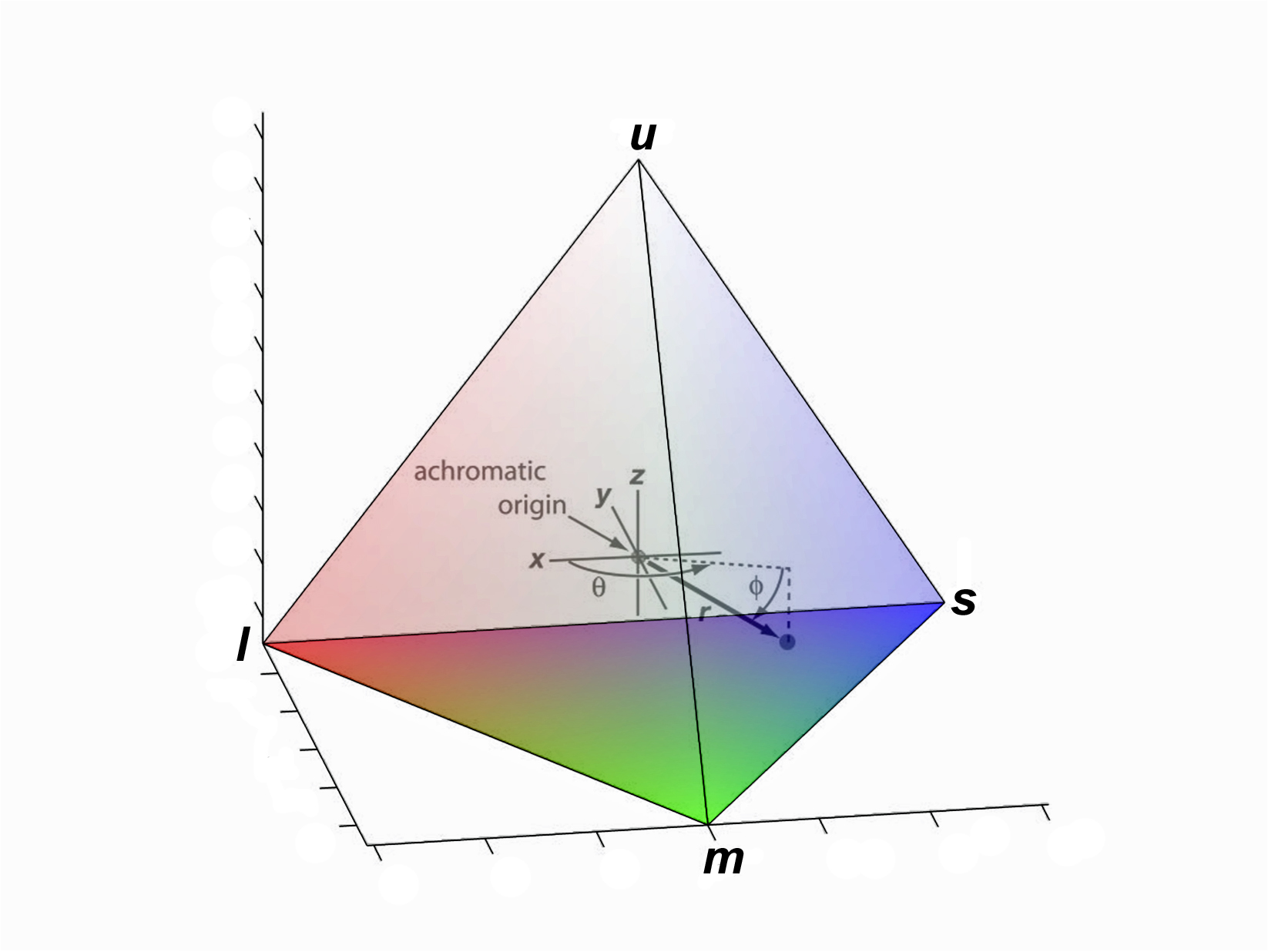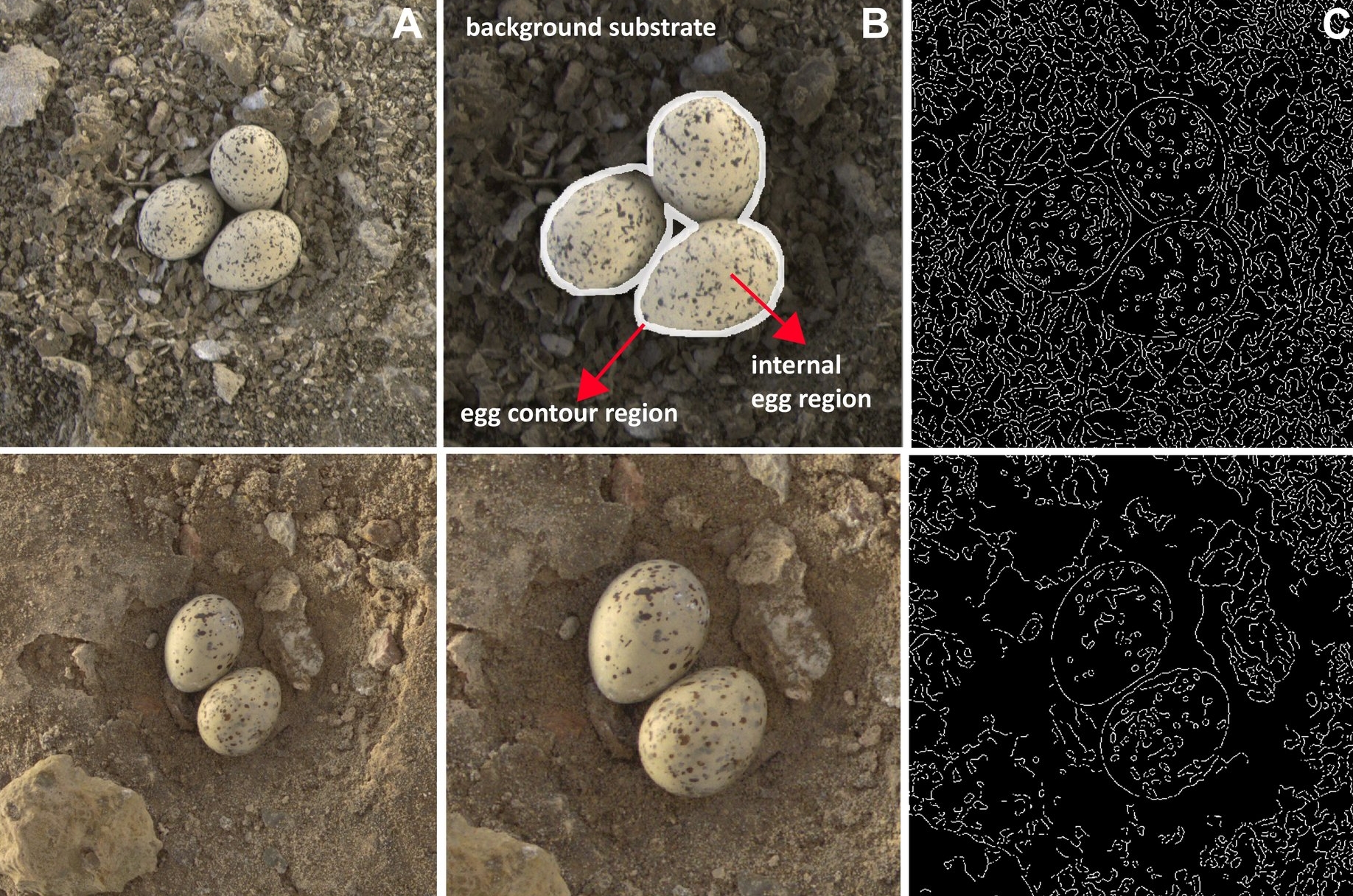SOFTWARE AND TOOLS
3D Digital Multispectral Models
We developed a pipeline for creating digital 3D, color-rich models of avian museum specimens. Our approach combines ultraviolet (UV) and human-visible (VIS) multispectral imaging with photogrammetry. The 3D multispectral models can be analyzed from the visual perspective of different signal receivers and ultimately animated. For code and details, please refer to the following:
Miller, A. E., B. G. Hogan, and M. C. Stoddard. 2022. Color in motion: Generating 3-dimensional multispectral models to study dynamic visual signals in animals. Frontiers in Ecology and Evolution 10:983369.
TetraColorSpace
TetraColorSpace
is a computer program developed for the tetrahedral analysis of colors measured from reflectance spectra or from four cone stimulus values, using MATLAB.
TetraColorSpace
can analyze colors based on ultraviolet or violet cone-type avian visual systems, or can use cone-sensitivity functions input by the user.
TetraColorSpace
provides an assortment of quantitative analyses and graphical tools for describing color stimulus variation and diversity. Many of the TetraColorSpace functions have been incorporated into the R package pavo by Maia et al (2013).
TetraColorSpace is provided here (download the MATLAB m-file or text file) and the manual is available here. When using the program, please cite the original publication:
Stoddard, M. C. and Prum, R. O. 2008. Evolution of avian plumage color in a tetrahedral color space: A phylogenetic analysis of new world buntings. American Naturalist, 171, 755-776.
NaturePatternMatch
NaturePatternMatch
is a pattern recognition program which extracts and compares recognizable features in visual scenes. It uses the Scale-invariant Feature Transform (SIFT). Please visit www.naturepatternmatch.org for details. When using the program, please cite the original publication:
Stoddard, M. C., R. M. Kilner, and C. Town. 2014. Pattern recognition algorithm reveals how birds evolve individual egg pattern signatures. Nature Communications. DOI: 10.1038/ncomms5117.
Using a new pattern recognition tool, NaturePatternMatch, we showed that host birds have evolved individual egg pattern signatures, which allow them to distinguish their own eggs from those of a cuckoo cheat. NaturePatternMatch extracts visual features, here represented by magenta vectors (center). Three eggs each (represented in different rows) laid by three different Great Reed Warblers are shown here (right). Photo credits: D. Kjaer (left) and M. C. Stoddard/Natural History Museum, UK (center, right).
Using a new pattern analysis tool, EdgeDetector, we tested the hypothesis that plover and tern eggs are more likely to survive if they are well camouflaged. Our tool uses edge detection algorithms to identify edges in the visual scene and then calculates a range of camouflage metrics related to background matching (blending into the background) and disruptive coloration (obscuring the outline). Surprisingly, we found that our measures of camouflage do not predict survival in this system, in Bahia de Ceuta, Mexico.
EdgeDetector
EdgeDetector
is a computer program developed for detecting edges and calculating camouflage metrics in visual scenes. It is provided for free upon request. When using the program, please cite the original publication:
Stoddard, M. C., K. Kupán, H. N. Eyster, W. Rojas-Abreu, M. Cruz-López, M. Alejandro Serrano-Meneses, C. Küpper. Camouflage and clutch survival in plovers and terns. 2016. Scientific Reports 6(32059).
EggxTractor
EggxTractor
is a computer program developed for extracting individual eggs from digital images and to fit the Baker equation to each egg, yielding measures of lambda and tau. Eggxtractor is freely available upon request and can be readily applied to diverse questions about egg morphology across taxa. When using the program, please cite the original publication:
Stoddard, M. C., E. H. Yong, D. Akkaynak, C. Sheard, J. Tobias and L. Mahadevan. 2017. Avian egg shape: Form, function and evolution. Science 6344: 1249-1254. DOI:10.1126/science.aaj1945.




